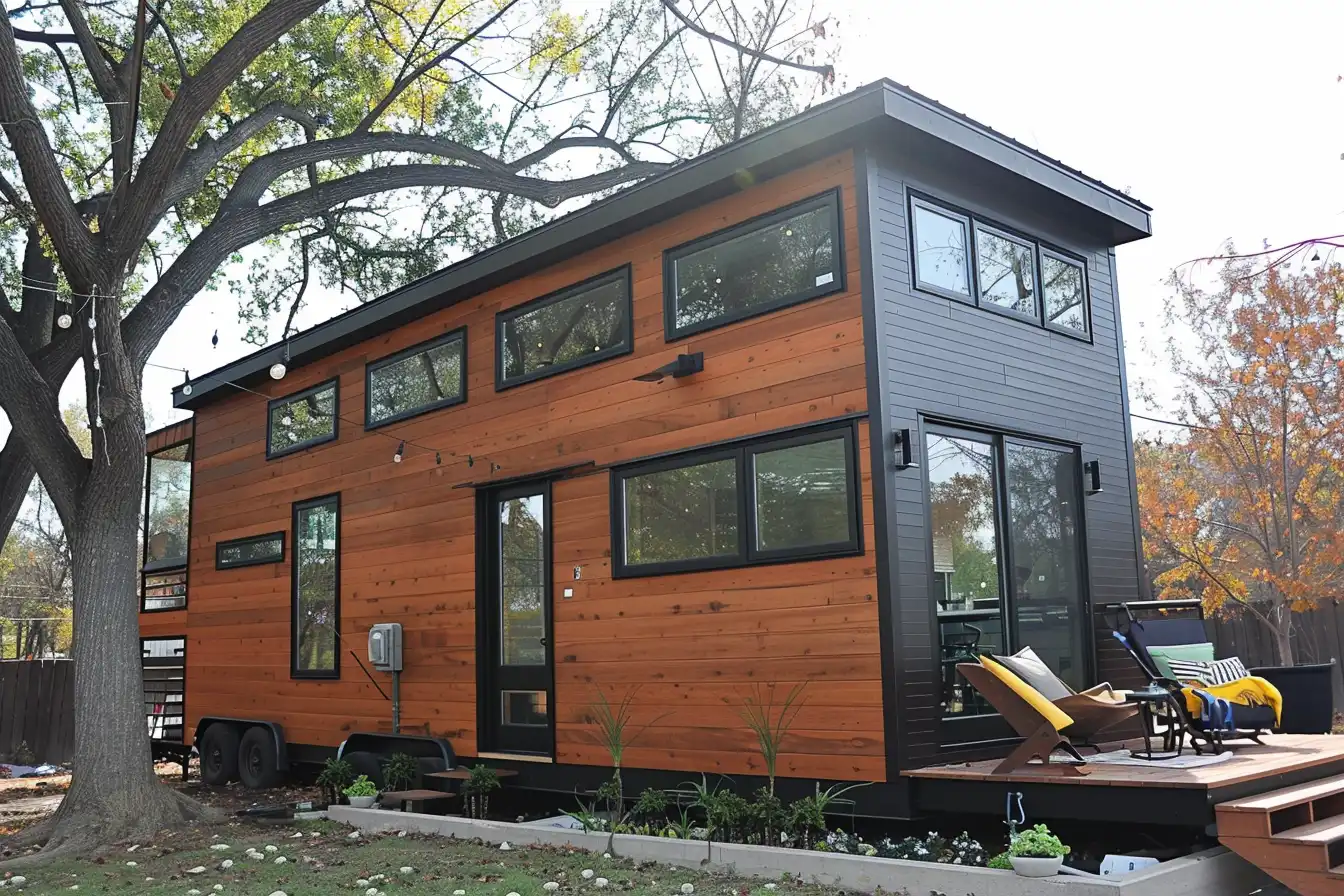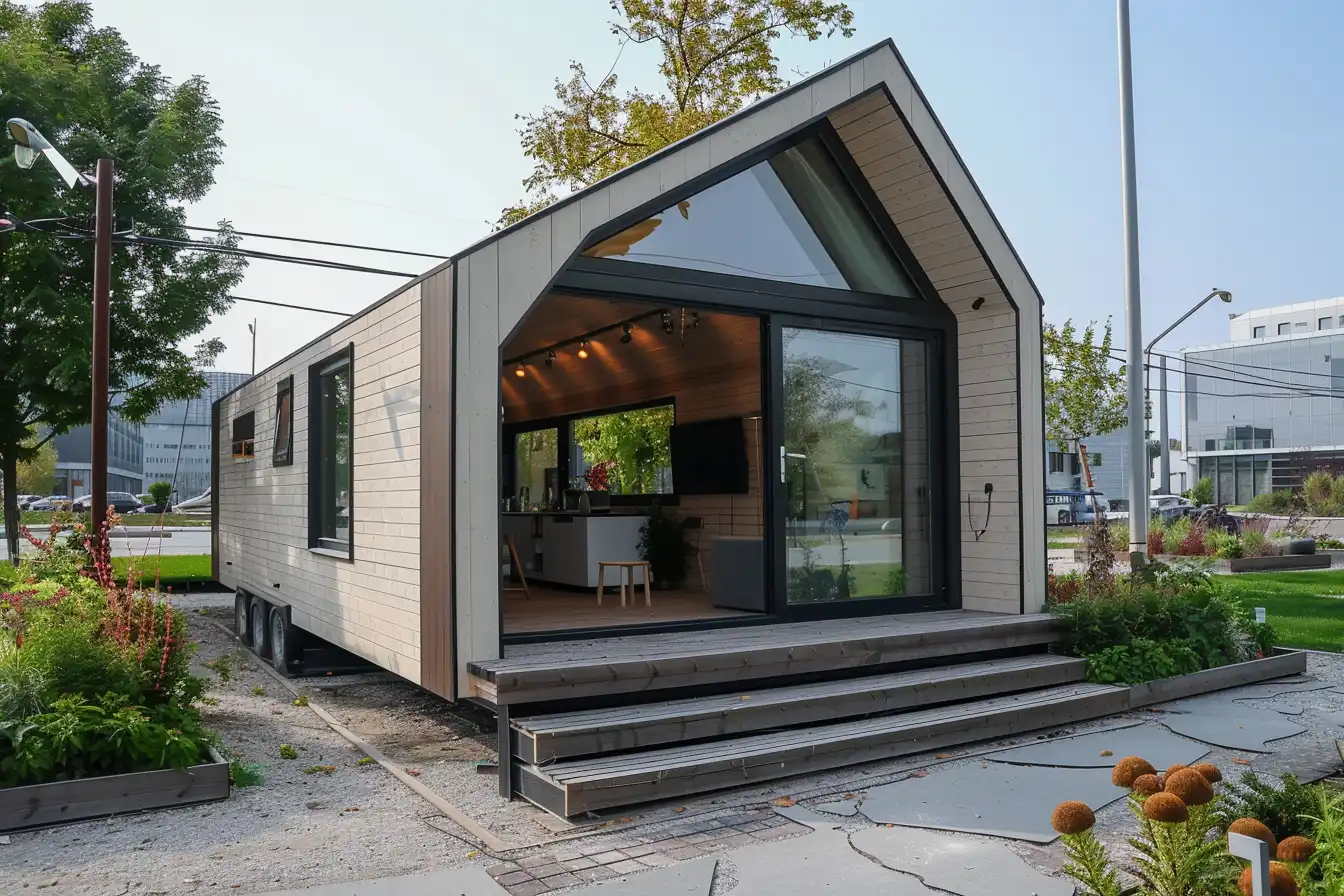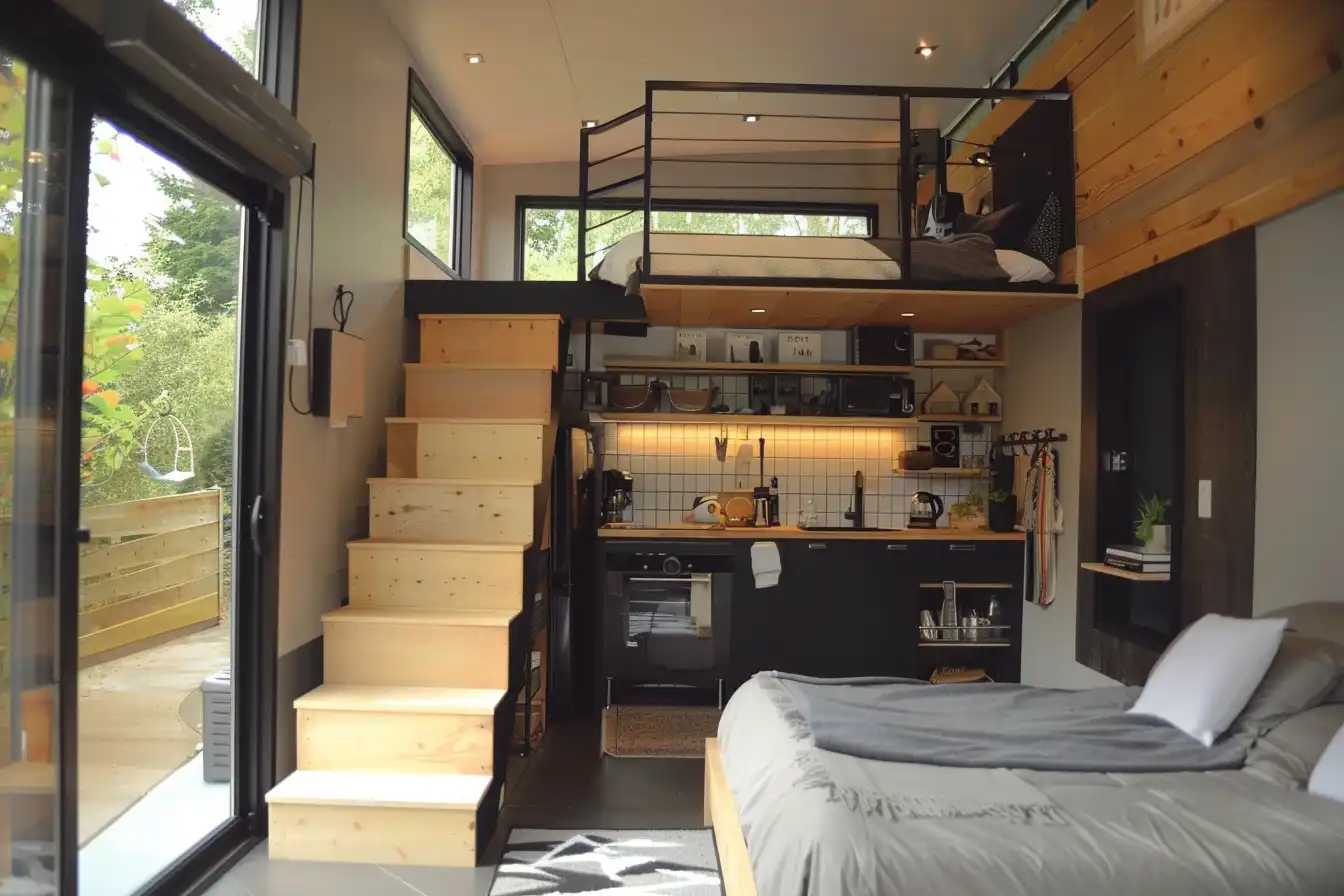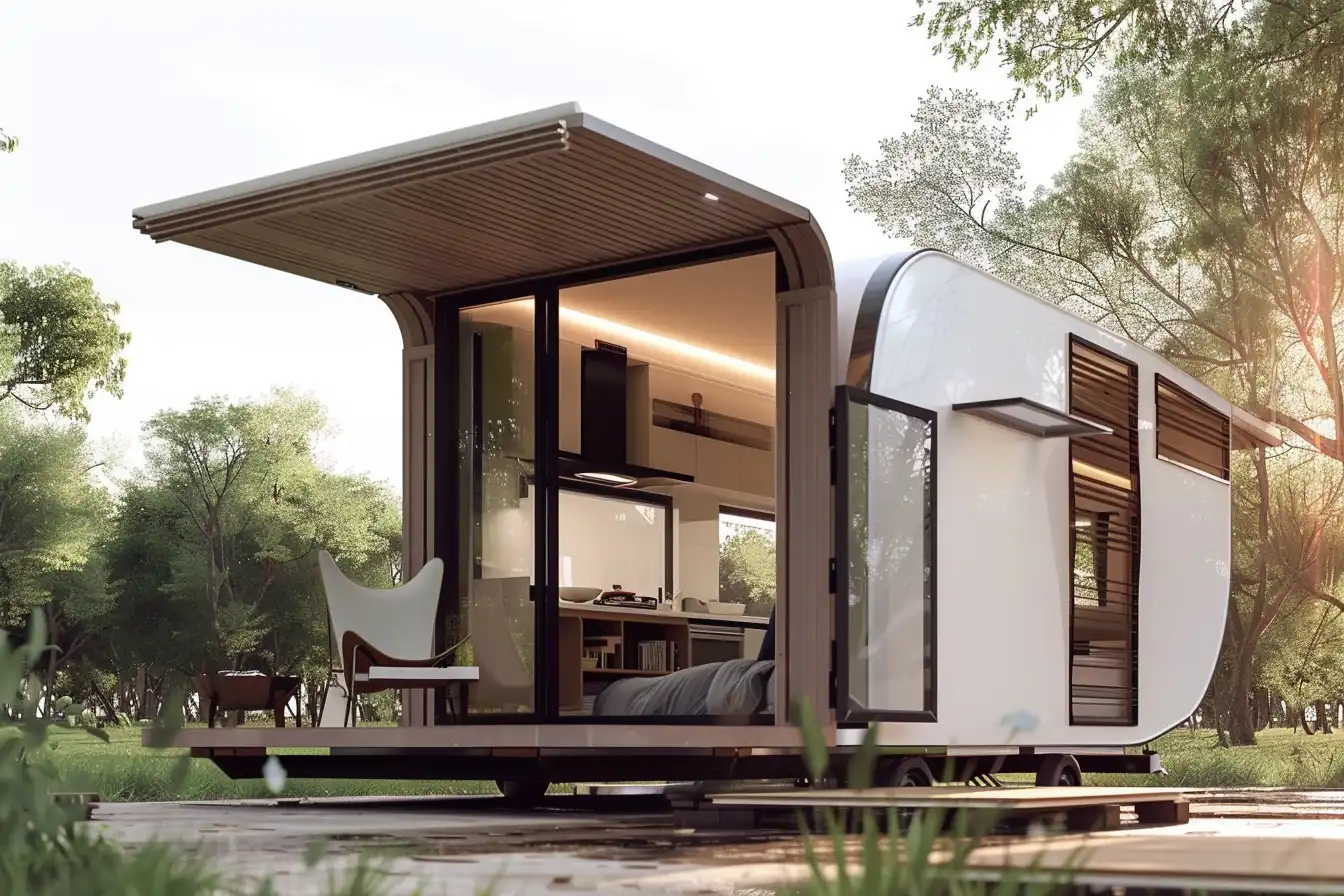Tiny homes, microhouses, or ultra-small dwellings—no matter what you call them, these pint-sized living spaces offer substantial benefits over traditional homes. As part of a growing social movement, many are opting for tiny houses for their affordability, sustainability, and unique lifestyle advantages. Imagine erecting your entire home in a day rather than months; the time and cost savings are just the beginning.
Beyond the obvious financial perks, tiny homes require less land and offer unparalleled portability. These compact abodes also have a significantly lower environmental footprint, making them an ideal choice for eco-conscious individuals. Whether you’re seeking a full-time living solution, a cozy weekend getaway, or an alternative to a traditional granny flat, tiny homes present a versatile and appealing option. Let’s explore some of the compelling reasons why more people are choosing to downsize their living spaces.

Key Benefits of Buying a Tiny House
Financial Advantages
Tiny houses offer significant financial benefits. Spending on construction and maintenance is considerably lower compared to traditional homes. Building permits range between $400 and $3,000 depending on location. Foundation costs are between $5,000 and $9,233. Essential home systems, including electrical ($250-$5,000), HVAC ($1,000-$2,500), and plumbing ($1,500-$4,000) are much lower than traditional home installations.
Additionally, the combined costs of interior and exterior elements, from roofing and siding to flooring and insulation, typically range from $14,050 to $60,000. Furniture and appliances will cost between $400 and $4,500. Yearly insurance for tiny homes ranges from $600 to $1,000, which is more affordable than the $1,759 per year for traditional homes. Monthly energy costs are around $50, which is far lower than conventional homes. Overall, tiny homes can cost as low as $500 monthly, including utilities, maintenance, and other expenses, compared to the average mortgage payment of $1,000 for traditional homes.
Improved Environmental Impact
Tiny homes drastically reduce environmental impact. These compact structures need fewer building materials and create less construction waste. Using sustainable materials like reclaimed wood and recycled steel enhances their eco-friendliness. Many tiny homes incorporate green features like solar panels and energy-efficient appliances to minimize energy consumption further.
Living in a tiny house also means a smaller carbon footprint. With reduced space, less energy is used for heating, cooling, and electrical needs. Waste production is minimized, and water consumption is usually lower. All these factors contribute to a more sustainable lifestyle, making tiny homes an excellent choice for environmentally conscious individuals.
Lifestyle and Flexibility
Tiny homes offer unparalleled lifestyle benefits and flexibility. Their small size encourages a minimalist lifestyle, reducing clutter and focusing on essentials. This simplicity can lead to lower stress levels and a more organized living environment.
The portability of tiny homes is another significant advantage. Built on flatbed trailers, they can be easily moved, allowing homeowners to relocate without the need for a traditional moving process. This flexibility is ideal for individuals who prefer to travel, work remotely, or experience different living environments. Customization extends this flexibility; many builders offer options to tailor the design to specific preferences, ensuring that the home meets all personal needs.
Tiny homes can also serve various purposes—full-time residences, vacation getaways, or even investment properties. Their versatility makes tiny homes a smart choice for diverse living solutions, catering to both practical and lifestyle needs.

Detailed Advantages of Tiny House Living
Cost-Effectiveness and Savings
Tiny homes offer significant cost savings. Construction costs for tiny homes range from $30,000 to $75,000. This is considerably lower than the average cost of building a traditional home, which can exceed $300,000. On top of construction savings, maintenance costs are also reduced due to the smaller size. Utility bills are lower, given the limited space requiring heating, cooling, and electricity.
Insurance for tiny homes may be higher when compared to traditional homes due to their mobility. However, many tiny homeowners find that the overall financial outlay remains substantially lower. Financing options are available, including specialized tiny home loans, which are becoming more accessible as the popularity of tiny homes grows.
Low Environmental Footprint
Tiny house living promotes sustainability. Smaller homes use fewer resources in construction and maintenance. Typically, tiny homes are built using sustainable materials and often incorporate energy-efficient systems. Solar panels, composting toilets, and rainwater harvesting systems are common features, helping to reduce the ecological impact.
Living in a tiny house encourages a minimalist lifestyle. This reduces consumption and waste, making it easier to live sustainably. Additionally, the small footprint of tiny homes means less land usage and a lower overall impact on the environment.
Mobility and Travel Opportunities
One of the standout advantages of tiny house living is mobility. Many tiny homes are built on trailers, allowing for easy relocation. This mobility provides flexibility for those who prefer not to be tied to a single location. It also enables spontaneous travel, making tiny houses ideal for adventure lovers and digital nomads.
Tiny homes facilitate exploration of different environments without the need for multiple properties. This is especially appealing for those who enjoy seasonal work, traveling, or simply changing scenery from time to time. The ability to move your home offers endless possibilities for new experiences and adventures.

Challenges and Considerations
Spatial Limitations
Spatial limitations in tiny houses require careful organization and creative solutions. With only so much space available, amenities might be reduced or combined. For example, a kitchen might double as an office, and a bedroom and living room could merge into one area. These constraints often necessitate multifunctional furniture and efficient storage solutions like lofts or built-in compartments. While some find this cozy and efficient, others may struggle with the lack of separate rooms and full-sized appliances, such as a washer and dryer. Mobility challenges are another concern, particularly with loft bedrooms, which can be difficult for those with limited mobility.
Legal and Zoning Issues
Legal and zoning issues can complicate the placement and approval of tiny homes. Many municipalities have minimum square footage requirements that tiny homes may not meet. Specific foundation types and strict regulations on accessory dwelling units (ADUs) further limit acceptance, particularly for models on wheels. Off-grid living options are also restricted since not all communities support this lifestyle. Consequently, extensive research and understanding of local regulations are essential to avoid fines or relocation issues. This can involve consulting with local authorities or seeking advice from an attorney specializing in real estate.

Conclusion
Tiny homes present a unique opportunity for those seeking a simplified and sustainable lifestyle. They stand out due to their cost-effectiveness. According to Bob Vila, parking and building permits can range from $400 to $2,300, while construction permits cost between $500 and $3,000. These figures indicate significant savings compared to traditional homes, making tiny houses an economical choice.
Our research indicates tiny houses reduce environmental impact. With lower energy consumption and fewer building materials, they promote eco-friendly living. Utilizing energy-efficient systems further cuts down on environmental footprint. For instance, solar panels and composting toilets are common features in sustainable tiny homes.
Mobility is another appealing advantage. Many tiny homes come with a trailer hitch, allowing owners to relocate easily. This feature benefits digital nomads and adventure enthusiasts who prefer a mobile living experience. However, it’s important to understand insurance requirements. Insuring a tiny home might be more expensive than traditional homeowners insurance due to the increased risk from frequent movement.
Tiny house living promotes a minimalist lifestyle. Owners often find joy in decluttering and focusing on necessities. This lifestyle shift can lead to less financial stress and more freedom, fostering a quality of life centered on experiences rather than possessions.
Potential challenges need addressing. Spatial limitations require innovative solutions for storage and multi-functional furniture. Legal and zoning issues must be navigated carefully, as some areas have strict regulations on minimum square footage and off-grid living. Understanding and complying with local laws are crucial for a hassle-free living experience.
Tiny homes offer substantial benefits in affordability, sustainability, and mobility. While challenges exist, a well-planned approach can help overcome them, making tiny homes a viable and attractive housing option.
- affordable housing solutions
- affordable tiny homes
- buy a sustainable home
- buying a tiny house
- cheap tiny houses
- custom tiny house builders
- downsizing with tiny homes
- eco-friendly tiny homes
- energy-efficient tiny homes
- minimalist living
- mobile tiny houses
- off-grid tiny homes
- small house movement
- sustainable housing options
- sustainable tiny living
- tiny home cost-effectiveness
- tiny home eco-living
- tiny home mobility
- tiny homes community living
- tiny house benefits
- tiny house lifestyle
- tiny house on wheels
- tiny houses for sale
- tiny living advantages















Leave a comment